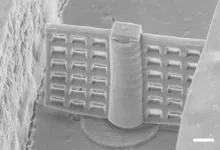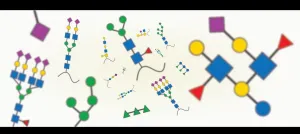(Press-News.org) Proper chromosome segregation into two future daughter cells requires the mitotic spindle to elongate in anaphase. However, although some candidate proteins are implicated in this process, the molecular mechanism that drives spindle elongation in human cells has been unknown, until now! Researchers at the Croatian Ruđer Bošković Institute (RBI) have discovered the exact molecular mechanism of bridging microtubules sliding and its role in proper distribution of genetic material during cell division. These latest results were published in the scientific journal Developmental Cell (IF: 10.092).
Cell division is a fundamental process required for stable transmission of genetic information from a parent cell to two daughter cells. Sister chromatids segregate into future daughter cells during anaphase by kinetochore fibre shortening (anaphase A) and spindle elongation (anaphase B).
Moreover, the importance of spindle elongation in human cells is evident from the fact that in addition to being the main driver of chromosome movement, it promotes correct segregation of lagging chromosomes, and its defects correlate with cancer.
Since this is one of the key steps in cell division, which occurs in almost all organisms, the molecular mechanism that drives spindle elongation has been in the spotlight of intensive research for many decades now. Although there has been some important breakthrough made in the last twenty years, that shed light on the molecular mechanisms behind the elongation process, the researchers did not manage to identify the exact proteins involved in the self-elongation of the spindle in human cells.
However, the team of molecular biologist at the Croatian Ruđer Bošković Institute - Dr Kruno Vukušić, doctoral students Ivana Ponjavić, Patrik Risteski and Dr Renata Buđa, led by Prof Iva Tolić, discovered that two mechanistically distinct sliding modules, one based on a self-sustained kinesin and the other on a crosslinker-assisted kinesin motor, power the mechanism of spindle elongation in human cells.
"We hope these results will encourage new research into the role of spindle elongation in the final steps of cell division, when the cell completes the division between the newly formed daughter cells. I believe these results are just the first step on a path of elucidating the complex control mechanisms acting behind these motor proteins, that operate under strict control of many other factors in the cell. Moreover, the principle of co-operation between these motor proteins, that we have described, could help other scientists in determining molecular mechanisms in other crucial cell processes," said Professor Iva Tolić, research leader.
What molecular mechanisms are responsible for spindle elongation?
The mitotic spindle is crucial to the process of cell division. It is a dynamic and complex cellular structure made of microtubules and associated proteins. In addition to providing structural support within cells, among many other roles, these microtubules provide tracks for motor proteins, which transport chromosomes with our genetic material and position them in the centre of the mitotic spindle. They are assisted by special motor and microtubule-binding proteins.
After all the chromosomes have been successfully connected to the microtubules on either side of the mitotic spindle, the bond between sister chromatids, that make up the chromosome, breaks down and the chromatids begin their journey at the two distant halves of the mitotic spindle. At the same time, the mitotic spindle begins to elongate to further contribute to the physical removal of chromatids, which is the final goal of any division process.
"We wanted to understand which motor proteins are responsible for elongation of the mitotic spindle in anaphase, so we developed a set of tools to remove individual proteins and groups of proteins at a specific time, just before the spindle elongation. We also used various other methods, some of which we adapted for the first time to the study of the mitotic spindle, which allowed us to study the organization of microtubules in the central part of the mitotic spindle. We used methods that enable very rapid monitoring of dynamic changes in bridging microtubules, structure we have previously shown to be crucial for proper chromosome segregation in human cells." explains Dr. Kruno Vukušić, postdoctoral fellow in the Tolić Lab, who is one of the first authors on this paper together with his colleague Ivana Ponjavić.
The key role of motor proteins KIF11 and KIF4A
"By applying the approach of simultaneous silencing of the function of multiple motor proteins, we wanted to discover a potential network of independent motor protein systems involved in the process of the mitotic spindle elongation. By using this approach, we observed that after simultaneous removal of the activity of KIF11 protein and KIF4A protein, spindle elongation does not occur at all, unlike their individual perturbations, which means that combined work of these proteins is crucial for elongation. This is the first case of stopping the elongation of the mitotic spindle by removal of specific motor proteins in human cells. In addition, we have seen that the KIF4A protein depends on the PRC1 protein to localize bridging fibres, so the same effect can be obtained by silencing the PRC1 protein combined with inhibition of the KIF11 motor protein." says Patrik Risteski, a doctoral student and one of the authors of the paper.
Further experiments demonstrated that independent motor proteins KIF11 and KIF4A participate specifically in the sliding of bridging microtubules, which then push the poles of the mitotic spindle from each other. This confirms that their role in the sliding of antiparallel microtubule bundles also occurs in anaphase cells, since the same has been shown in previous works only in vitro.
"These results have led us to conclude that anaphase B is a process driven by independent motor protein systems that have quite different mechanisms of action and probably different control mechanisms. This means that the cell ensures by the use of independent modules very high success of this process, which is not surprising, since it is one of the riskiest processes for the fate of future daughter cells that arise as a result of the division of the mother cell.
This work has shown that the consequences of unsuccessful elongation of the mitotic spindle are devastating for the division of human cells and the properly balanced inheritance of genetic material." concludes Professor Iva Tolić.
INFORMATION:
The research was supported by funding from projects of the European Research Council, the Croatian Science Foundation and the Scientific Centre of Excellence for Quantum and Complex Systems, and Representations of Lie Algebras (QuantiXLie).
WASHINGTON -- Researchers have fabricated a magnetically driven rotary microfilter that can be used to filter particles inside a microfluidic device. They made the tiny turning filter by creating a magnetic material that could be used with a very precise 3D printing technique known as two-photon polymerization.
Microfluidic devices, also known as lab-on-a-chip devices, can be used to perform multiple laboratory functions inside a chip that usually measures a few square centimeters or less. These devices contain intricate networks of microfluidic channels and are becoming more and more complex. They may be useful for a variety of applications such as screening molecules ...
Antidepressants can help humans emerge from the darkness of depression. Expose crayfish to antidepressants, and they too become more outgoing -- but that might not be such a positive thing for these freshwater crustaceans, according to a new study led by scientists with the University of Florida.
"Low levels of antidepressants are found in many water bodies," said A.J. Reisinger, lead author of the study and an assistant professor in the UF/IFAS soil and water sciences department. "Because they live in the water, animals like crayfish are regularly exposed to trace amounts of these ...
Pharmaceutical pollution is found in streams and rivers globally, but little is known about its effects on animals and ecosystems. A new study, published in the journal Ecosphere, investigated the effects of antidepressant pollution on crayfish. Just two weeks of citalopram exposure caused changes in crayfish behavior, with the potential to disrupt stream ecosystem processes like nutrient cycling, oxygen levels, and algal growth.
Coauthor Emma Rosi, a freshwater ecologist at Cary Institute of Ecosystem Studies, says, "Animals living in streams and rivers are exposed to a chronic mix of pharmaceutical pollution as a result of wastewater contamination. Our study explored how antidepressant levels ...
New Haven, Conn. --In a new study led by Yale Cancer Center, researchers show the nucleoside transporter ENT2 may offer an unexpected path to circumventing the blood-brain barrier (BBB) and enabling targeted treatment of brain tumors with a cell-penetrating anti-DNA autoantibody. The study was published today online in the Journal of Clinical Investigation Insight.
"These findings are very encouraging as the BBB prevents most antibodies from penetrating the central nervous system and limits conventional antibody-based approaches to brain tumors," said James E. Hansen, MD, associate professor of therapeutic radiology, radiation oncology chief of the Yale Gamma Knife Center at Smilow Cancer Hospital, and corresponding author of the study.
Deoxymab-1 (DX1) ...
Ethiopia, Nigeria, Colombia, Myanmar and Syria are just a handful of the places around the world currently engaged in ongoing civil wars. Even when peace agreements can be negotiated to end civil wars, maintaining stability is incredibly challenging. In these fragile post-conflict areas, a small communal dispute can easily escalate and unravel peace deals.
Peacekeepers can help contain the spread of violence and promote peaceful interactions between groups, but how? And in what situations can peacekeepers be most effective? New research from Washington University ...
Changing your eating habits or altering your circadian clock can impact healthy fat tissue throughout your lifespan, according to a preclinical study published today in Nature by researchers with The University of Texas Health Science Center at Houston (UTHealth).
Healthy fat tissue helps provide energy, supports cell growth, protects organs, and keeps the body warm. A good quality diet and one that is consumed in a rhythmic manner (i.e., during our active cycle) is important in maintaining healthy fat, the researchers found.
Adipocyte progenitor cells mature into adipocytes - the healthy fat cells that make up our adipose tissue, which stores energy as fat. Researchers discovered that adipocyte progenitors undergo rhythmic daily proliferation throughout the ...
A new model that applies artificial intelligence to carbohydrates improves the understanding of the infection process and could help predict which viruses are likely to spread from animals to humans. This is reported in a recent study led by researchers at the University of Gothenburg.
Carbohydrates participate in nearly all biological processes - yet they are still not well understood. Referred to as glycans, these carbohydrates are crucial to making our body work the way it is supposed to. However, with a frightening frequency, they are also ...
Researchers at the University of Maryland School of Medicine (UMSOM) have developed two rapid diagnostic tests for COVID-19 that are nearly as accurate as the gold-standard test currently used in laboratories. Unlike the gold standard test, which extracts RNA and uses it to amplify the DNA of the virus, these new tests can detect the presence of the virus in as little as five minutes using different methods.
One test is a COVID-19 molecular diagnostic test, called Antisense, that uses electrochemical sensing to detect the presence of the virus. The other uses a simple assay of gold nanoparticles to detect a color change when the virus is present. Both tests were developed by Dipanjan Pan, PhD, Professor of Diagnostic Radiology and Nuclear Medicine ...
Two new studies have cast unprecedented light on disease processes in tuberculosis, identifying key genetic changes that cause damage in the lungs and a drug treatment that could speed up recovery.
Tuberculosis (TB) is a lung infection that has killed more humans than any other and until last year was the top infectious killer around the world. Globally, an estimated 10 million people develop the disease each year.
The findings are reported in two papers in the Journal of Clinical Investigation.
In the first study, a team from the University of Southampton used a new 3D culture system they have developed to observe the changes that occur in cells infected with TB. Unlike the laboratory-standard 2D culture system, where cells are placed ...
This past year has been transformational in terms of not only a global pandemic but a sustained focus on racism and systemic injustice. There has been a widespread circulation of images and videos in the news and online. Just like adults, adolescents are exposed to these images with important consequences for their emotional health and coping. However, few studies have sought to understand the influence of racism experienced online.
According to a qualitative study published in JAMA Network Open adolescents expressed feelings of helplessness when exposed to secondhand racism online. Specifically, adolescents described helplessness stemming from the pervasiveness of racism in our society. This was illustrated by quotes, such as "[racist events are] just another day in the life" referring ...



